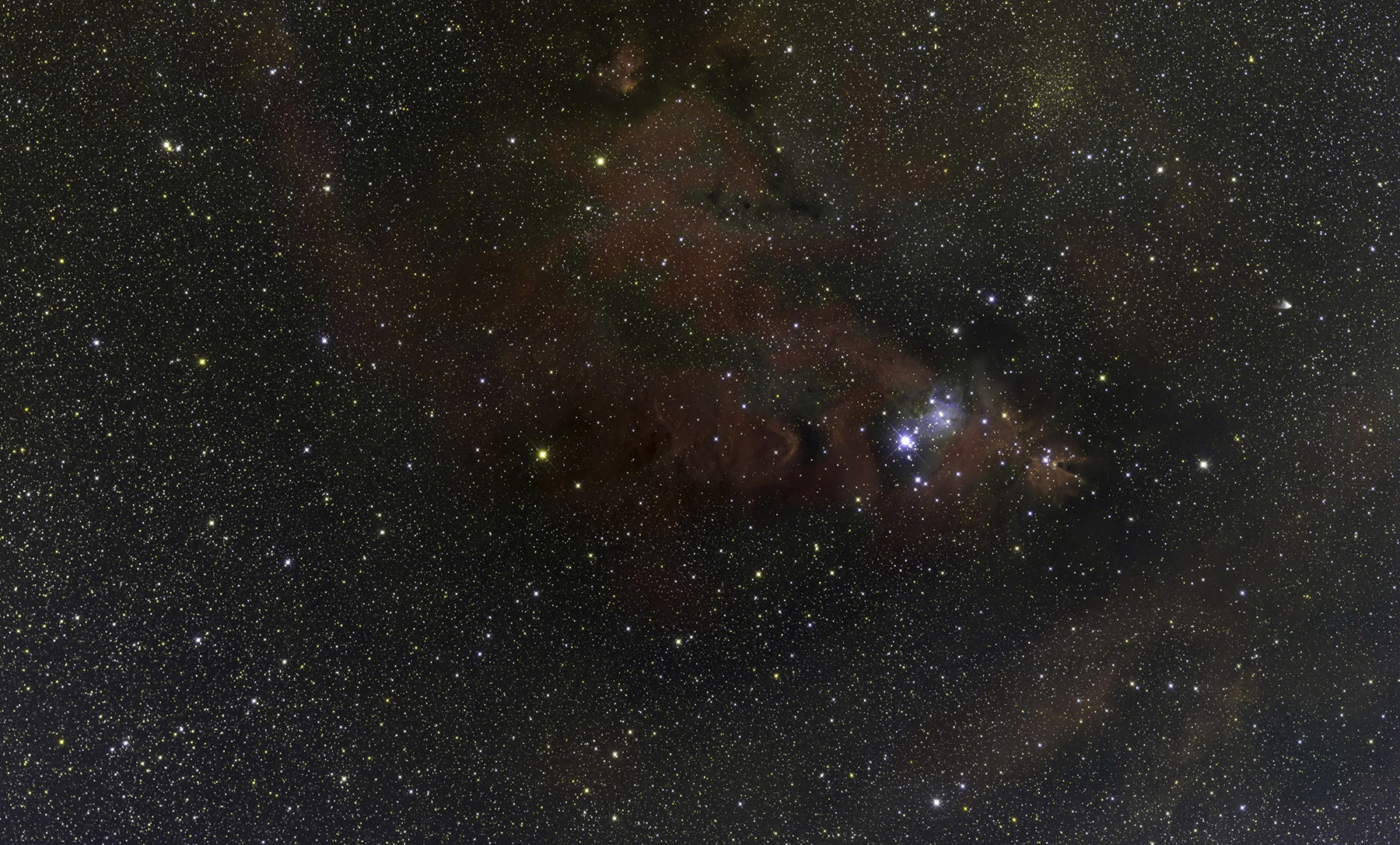NGC 2264

NGC-2264 – Christmas Tree Cluster and Cone Nebula
This is a wide field view of the Christmas Tree Cluster and Cone nebula which together form NGC 2264 which is located in the Orion arm of the Milky Way galaxy. Most of the open star cluster forming the Christmas tree cluster is composed of a loose collection estimated to be more than 600 young stars (from 100,000 to 4 million years old) approximately 2500 light years from Earth. They are associated with a very large emission nebula which gets one of its names from the dark cone-shaped area near a star-forming region where dust and gases block light transmission. The other name commonly used for the Cone nebula is Sharpless 273 (Sh2-273). Sharpless 273 (red) can be seen in most of the right side of the astrophoto and is densest nearest to the star cluster. Sharpless 273 is estimated to be 1000 light years from Earth and is partially illuminated by the stars in the Christmas Tree cluster. Much of the light is reflected as blue light as it passes through the nebula. The brightest, blue star in the field that forms the trunk of the Christmas Tree Cluster is S Monocerotis (15 Monocerotis). It is a blue-white binary system (O7 V). Distance estimates for the star vary from 2500 light years to 1000 light years (STARS, Jim Kaler, U Illinois). Two other notable structures in the astrophoto are: 1) Trumpler 5; and 2) Hubble’s Variable nebula. Trumpler 5 is a 10th magnitude open star cluster 9198 light years from Earth. Hubble’s Variable nebula is a small bright emission and reflection nebula surrounding the variable star R Moncerotis.
|